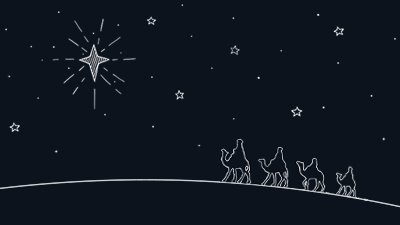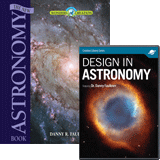HD 140283: Older than the Universe?
Recently there was a Forbes article about stars older than the universe.1 This story was based upon research published more than four years ago, so it’s not clear why Forbes is reporting on this now. Author Howard E. Bond and his collaborators presented their work on the star HD 140283.2 From its high velocity and low metal content, astronomers had long thought HD 140283 was an extreme population II star and hence among the oldest stars. Bond and his collaborators used the Hubble Space Telescope accurately to measure the distance to HD 140283. When combined with accurate measurements of its apparent brightness, they computed the intrinsic brightness of HD 140283. They also accurately determined the surface temperature of HD 140283. A plot of the intrinsic brightness versus temperature revealed that HD 140283 is a sub-giant star. Astronomers understand that sub-giant stars have recently exhausted the hydrogen fuel in their cores. Application of the most up-to-date models of how such stars evolve enabled the team to determine the age of HD 140283 to be 14.46 ± 0.8 billion years. The age of the universe currently is thought to be 13.77 ± 0.06 billion years.
The Problem
If one ignores the errors on these measurements, there appears to be a problem, because HD 140283 would be 0.7 billion years older than the universe. However, the errors could be interpreted as HD 140283 being 150 million years younger than the universe. Does this solve the problem? Not really. First, this would require both sets of errors to conspire in a very convenient way. Second, 150 million years probably is not sufficient time for the star to have formed within the current theories of the early evolution of the universe. Third, astronomers generally do not think that population II stars, such as HD 140283, are primordial. Instead, population II stars supposedly were preceded by population III stars.
Population III Stars
While population II stars have very low metal content (in this context, elements heavier than helium), they have some metal content. However, the big bang universe begins with hydrogen, helium, and a little bit of lithium. Presumably, the first generation of stars (population III) formed with only these elements, and they synthesized the heavier elements found in population II stars and the younger, more metal-rich population I stars. While population III stars are necessary for the evolutionary theory of cosmic element synthesis and stellar evolution, astronomers have yet to find any evidence that they exist. Their existence would place even more time pressure for at least some population III stars to have formed and gone through their life cycles prior to the formation of HD 140283.
Model Dependence
Finally, one must realize that the ages of both the universe and HD 140283 discussed here are highly model dependent. If the models are changed, the ages change. This is reminiscent of the conflict between the ages of globular clusters (population II objects) and the age of the universe when the Hubble constant was revised upward 25 years ago. For more than three decades, the universe was thought to be 16–18 billion years old, and globular clusters were thought to be 15–16 billion years old. However, when the Hubble constant was revised downward, the age of the universe decreased, yielding a universe younger than globular clusters. The ages of globular clusters soon were adjusted downward. As the saying goes, necessity is the mother of invention.
Conclusion
The star HD 140283 presents a problem within the evolutionary paradigm. The best stellar evolution models fix its age to slightly older than the big bang model age for the universe. Most astronomers have ignored this difficulty, assuming that the errors in the computed ages of both HD 140283 and the universe could be interpreted in a way that solves the problem. However, that may be unlikely, and it hardly solves the need for the existence of even older stars to explain the metal content of HD 140283. Keep in mind that these results are model-dependent. If one changes the model, the problem may not even exist. Certainly, within the creation model, this isn’t a problem.
Footnotes
- Ethan Siegel, “The Greatest Cosmic Puzzle: Astronomers Find Stars That Appear Older Than The Universe,” Forbes, September 7, 2017, https://www.forbes.com/sites/startswithabang/2017/09/07/the-greatest-cosmic-puzzle-astronomers-find-stars-that-appear-older-than-the-universe/.
- Howard E. Bond et al., “HD 140283: A Star in the Solar Neighborhood That Formed Shortly after the Big Bang,” The Astrophysical Journal Letters 765, no. L12 (2013): doi:10.1088/2041-8205/765/1/L12.
Recommended Resources

Answers in Genesis is an apologetics ministry, dedicated to helping Christians defend their faith and proclaim the good news of Jesus Christ.
- Customer Service 800.778.3390
- © 2024 Answers in Genesis








